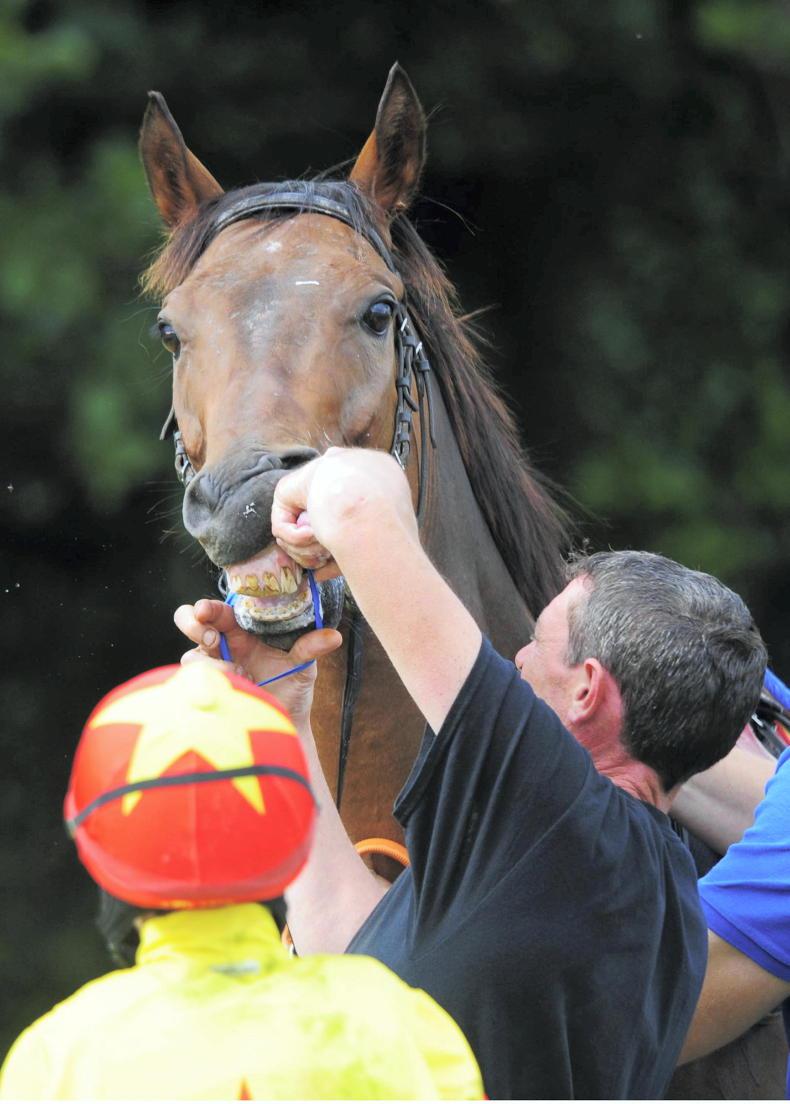A SCIENTIFIC study undertaken last year was recently shared by the British Equine Veterinary Association (BEVA). The study concludes there is “contradictory” evidence on whether or not tongue ties make any improvement on airway function.
The condition addressed by tongue ties is termed Dorsal Displacement of the Soft Palate (DDSP) but is more often known as ‘swallowing his tongue’ or ‘flipping his palate’.
Horses have to inhale and exhale once for every gallop stride and the upper airway must be wide and free from obstruction. If not, the horse struggles in his breathing and falters in his stride. It’s often the winning or losing of a race, particularly over longer distances or on heavy going.
Used as a training device for over a hundred years, the tongue-tie is a familiar piece of kit on the track. A tongue tie secures the horse’s tongue down and forward in the mouth so it cannot push up on the palate or get over the bit. Nylon tights and rubber bands are commonly and cheaply used to tie the tongue down and forward.
The study concluded that ‘a positive effect on pharyngeal diameters or laryngeal maximum width was not found. Therefore, the results of this study do not support the use of tongue ties to enhance upper airway function.’
Significant increase
In 2019 Dr. Safia Barakzai and veterinary student Catherine Finnegan made several studies on the efficacy of tongue ties at the Royal (Dick) School of Veterinary Studies in Scotland and discovered that “horses that ran once or twice wearing a tongue tie did not improve their performance, while extended use did appear to be beneficial.
“If they ran in three to five consecutive races wearing a tongue tie, they had a significant increase in earnings and were up to four times more likely to improve their earnings than matched control horses,” wrote Barakzai and Finnegan.


 This is a subscriber-only article
This is a subscriber-only article
 It looks like you're browsing in private mode
It looks like you're browsing in private mode










SHARING OPTIONS: